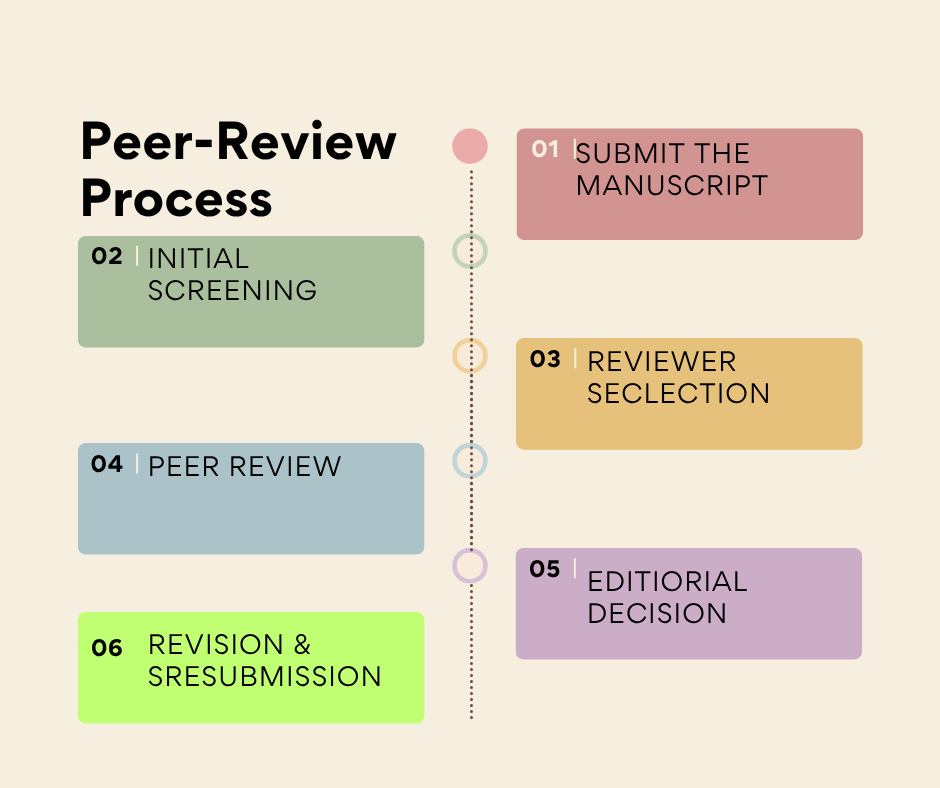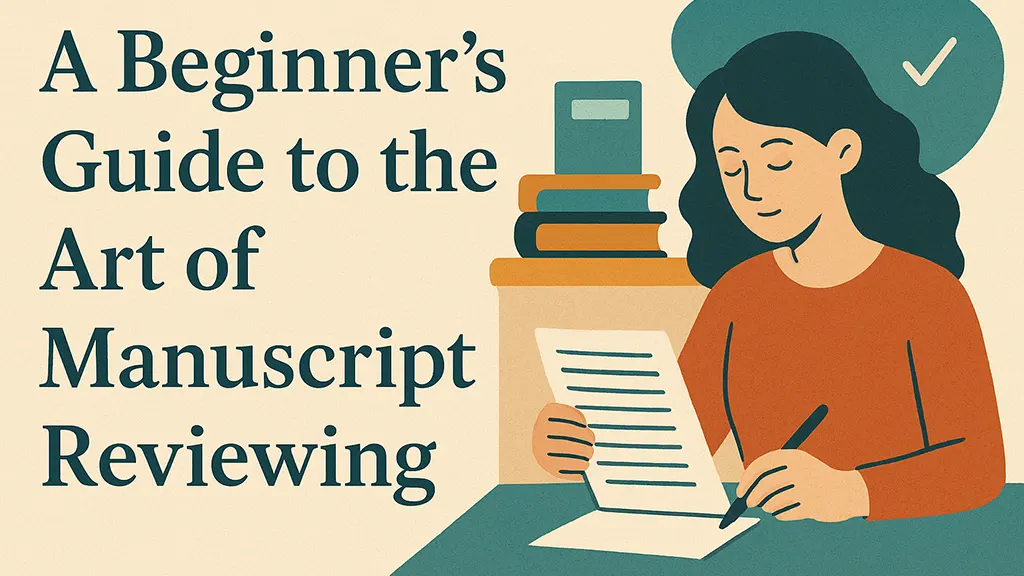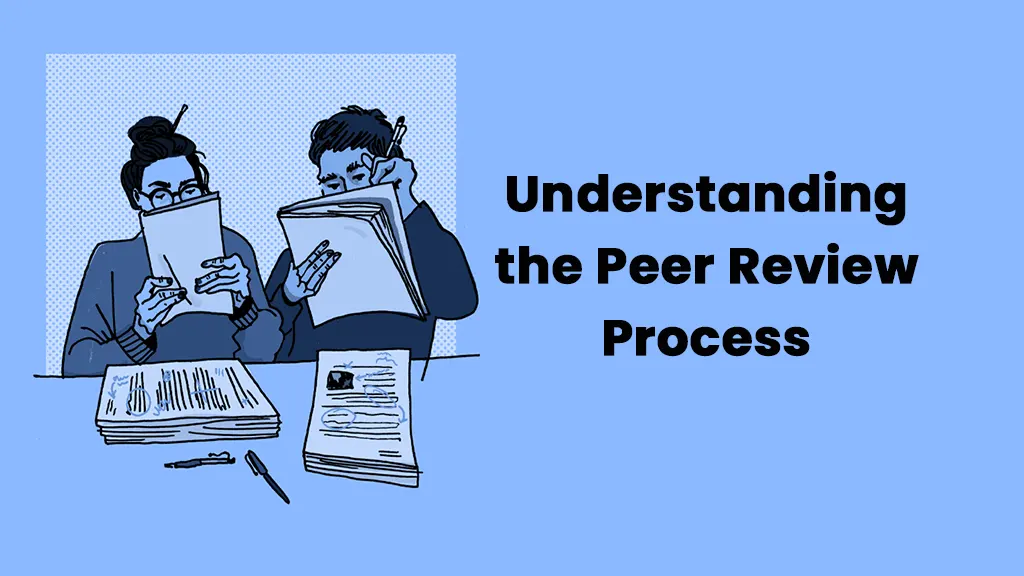Manuscript reviewing is one of the most essential yet under stimulated pillars of academic writing. It serves as the quality control mechanism, ensuring only reliable, authentic and credible information is published in the research articles and reaches the scholarly domains
Furthermore, for those individuals starting their journal, whether as authors, reviewers or editors, mastering the art of manuscript is essential.
So what is manuscript reviewing?
At its core, the process involves reviewing written research papers or manuscripts for journals and conferences before they are published.
The process requires critical thinking, fairness, attention to detail and genuine interest in advancing knowledge within a particular field. In this blog, we will walk you through everything you should know about manuscript reviewing, such as its importance, identifying reviewers, conducting proper peer reviews, and citing sources under review.
So, come on! Let’s get into the blog!
What is the Importance of Manuscript Reviewing?
Manuscript reviewing, or as we call it peer-review, is vital to ensuring credibility, authenticity and originality of the published research. It is mostly done before the articles are submitted for journal publishing.
Think of it as a quality control process to know about the methodology, references, findings and conclusions
Furthermore, from authors to editors and viewers, it is essential for everyone in the academic field.
Not only does it enhance the accuracy. But it also maintains the integrity of the scientific reviews. Here are the top reasons why peer review is vital:
- Quality Assurance: It helps maintain high standards and quality as the reviewers often ensure that methods, literature review, findings and referencing are accurate.
- Build Trust: Peer-reviewed publications have more value in academia. Why? It is because they undergo a critical audit before acceptance in top journals.
- Improves the Research: Another reason is that authors receive detailed feedback. This, in turn, strengthens their work. Furthermore, it refines their arguments, clarifies data and corrects errors.
- Community Collab: Reviewing allows researchers to stay updated on the latest developments. Moreover, it helps them give back to the community.
- Keeps updated: Reviewing the manuscripts helps reviewers stay updated about the current trends and insights.
For early-career researchers, engaging in the review process not only builds analytical skills. But it also enhances your writing proficiency. Also, it helps one understand what makes a manuscript publishable.
Overview of the Review Process

When it comes to reviewing, there is a structured process that you need to follow.
Why?
This ensures fairness. Here is what the peer-review process looks like:
- Submission: The first step is for the authors to find a known journal and submit their manuscript.
- Initial Screening: Next, the editors check whether the paper fits the journal’s scope and meets basic quality standards.
- Reviewer Selection: Qualified reviewers who have experience and knowledge in the topic are invited to assess the manuscript.
- Peer-Review: Reviewers evaluate the work based on originality, methodology, clarity and contribution to the field.
- Editorial Decision: Based on the reviewer feedback, the editor decides to accept, reject, or request revisions.
- Revisions & Resubmissions: If there are some changes required, authors are required to make them and then resubmit their manuscript.
Understanding this workflow helps both authors and reviewers set realistic expectations. Moreover, they appreciate the collaborative nature of academic publishing.
How to Choose Reviewers For Your Manuscripts?
Choosing the right reviewers is a delicate but essential step to ensure fair evaluation. Editors and authors, going for the pre-submission peer-review services, should consider several factors to find those who can provide meaningful, unbiased insights.
Here’s how you should do it:
Identifying Potential Reviewers
The first step is to look for the potential reviewers who have topic and subject expertise. Here is what you need to do:
- Look for the Subject Expertise: Always choose the reviewers who have already published in the same area or have deep knowledge across your topic.
- Check Recent Publication: Reviewing someone’s already reviewed work can confirm their credibility and familiarity with the topic. This also ensures that they have information about the current research trends.
- Avoid Conflicts of Interest: Reviewers should not have personal, professional or financial relationships with the authors.
- Use Databases and Professional Networks: There are tools like Publons, ResearchGate, and Google Scholar that help identify suitable experts.
Moreover, authors can suggest reviewers when submitting manuscripts. But it's the editor's decision about whom to invite. Also, the goal is to maintain objectivity. And also ensure that each review contributes to the feedback.
Evaluating Expertise and Availability
The next thing you need to look for is the availability and expertise. An ideal reviewer combines subject expertise, critical analysis skills and understanding.
Moreover, the reviewers must be able to deliver feedback within the journal’s timeline. Editors often assess this by reviewing a researcher’s past review activity, responsiveness and publication history.
When suggesting, the reviewers must:
- Provide accurate contact details and institutional affiliations.
- Furthermore, they should avoid recommending close collaborators.
- Also, they must ensure reviewers are active in research, not retired or inactive.
Choosing the right reviewers can enhance the credibility of the review process. Also, it ensures a balanced evaluation of the manuscript.
How to Peer Review a Manuscript?
For reviewers invited to review the manuscript, understanding your role and responsibilities is essential.
Remember, it is more than just pointing out flaws. Instead, it is about evaluating the paper’s contribution, guiding improvement and supporting integrity.
Understanding Reviewer Responsibilities
A reviewer’s primary duties include:
- Maintaining Confidentiality: They must never share or discuss the manuscript with others.
- Being Objective: Moreover, they should provide feedback based on content, not personal opinions or biases.
- Assessing Quality: They should also examine the research question, methods, data accuracy, and overall clarity.
- Providing Constructive Feedback: Offer clear suggestions for improvement without demeaning the author.
- Meeting Deadlines: Timely reviews keep the publication process moving smoothly. Therefore, they should be able to meet the deadlines.
Reviewers are like the gatekeepers of scientific credibility. Hence, they ensure your polished work meets the ethical standards.
Best Practices for Providing Feedback
Providing good reviews is essential. They should be constructive, specific and respectful. Furthermore, here’s how to make your feedback more effective.
- Start with a summary of the paper. This shows that you understood the main points correctly.
- Also, make sure to highlight the strengths before discussing weaknesses.
- Make sure to use a positive tone even when pointing out the errors. Stop using the judging tone.
- Additionally, you should suggest some specific improvements, like “Consider explaining your data collection process in more detail” instead of “The methods are unclear”.
- Make sure to avoid rewriting the paper or imposing personal writing preferences.
- Support criticisms with evidence of references.
Remember, your goal is not to reject but to improve the quality of the manuscript.
How to Review a Manuscript for a Journal
Reviewing for journals often follows a structured evaluation format. Furthermore, each journal may provide its own checklist or form. However, their core principle is the same.
Reading and Analysing the Manuscript
To review the manuscript, start with a quick overview. Furthermore, look for relevance and clarity. Additionally, conduct a detailed reading to evaluate scientific rigour and coherence. The key things to focus on are:
- Does the paper address an important research question?
- Is the literature review comprehensive and up to date?
- Are the methods appropriate and reproducible?
- Do results align with the conclusions drawn?
Moreover, take notes as you go. They will help structure your feedback later.
Structure and Presentation
Well-organised manuscripts are easier to assess. Hence, as the reviewer, it is your duty to evaluate:
- Title & Abstract: Do they accurately reflect the study’s content?
- Introduction: Is the research gap clearly defined?
- Results & Discussions: Are findings presented clearly with logical interpretation?
- Figures & Tables: Are they relevant, well-labelled and easy to understand.
Always remember, a well-structured paper not only reflects good research. But it also shows the author’s commitment to clarity and professionalism.
Scientific Validity
Perhaps the most critical aspect is determining whether the research is valid. This involves:
- Checking if the hypotheses are testable. Furthermore, they should be logically connected.
- Ensuring data analysis methods are appropriate for the research questions.
- Furthermore, discover if other researchers can repeat the study with the given information.
- Do make sure they follow all the ethical guidelines.
This ensures that the research work is meaningful to the field rather than adding misinformation.
Writing the Review
The next step is to write the review. It usually includes three sections, like:
- Summary of Manuscript: A short paragraph that tells what the paper is about.
- Major Comments: Discuss the critical issues such as conceptual flaws, methods, weaknesses or unclear data.
- Minor Comment: Make suggestions about the formatting, clarity and grammar.
Lastly, make sure to end the review with the recommendations and also provide a brief justification for it. Do make sure that you maintain a professional tone throughout.
How to Cite a Manuscript Under Review
Sometimes, as researchers, you need to cite a manuscript that is still under review or has not yet been published. Doing so correctly ensures transparency and avoids misrepresentations.
Understanding Citation Guidelines
Most style guides, including APA, MLA, and Chicago, have clear rules about citing unpublished work.
- Manuscripts under review should be cited as unpublished.
- They should not appear in the reference list unless accessible to readers.
- If you must refer to them, cite them in text only with a note.
- Manuscripts under review should be cited as “unpublished” or “in preparation.”
Examples of Proper Citations
Here are some examples in different styles:
APA Style:
(Smith, J., & Ali, R., 2025). Neural mechanisms of decision-making. Manuscript under review.)
Chicago Style:
Smith, John, and Rania Ali. “Neural Mechanisms of Decision-Making.” Unpublished manuscript, under review, 2025.
MLA Style:
Smith, John, and Rania Ali. “Neural Mechanisms of Decision-Making.” Manuscript under review, 2025.
Wrap Up!
This brings us to the end of the guide! Mastering the art of manuscript reviewing takes time, practice and ethical mindfulness. A good reviewer balances critical evaluation with support. Furthermore, they ensure that every piece of published research upholds the standards of academic integrity and excellence.
Whether you are an aspiring reviewer or a researcher preparing your first manuscript, hopefully this guide will help you navigate the peer review process.




 info@JournalPublishers.co.uk
info@JournalPublishers.co.uk









